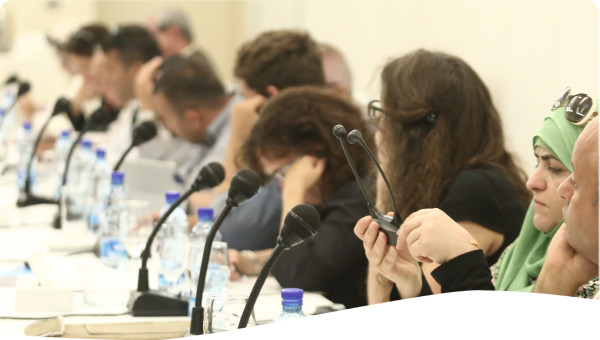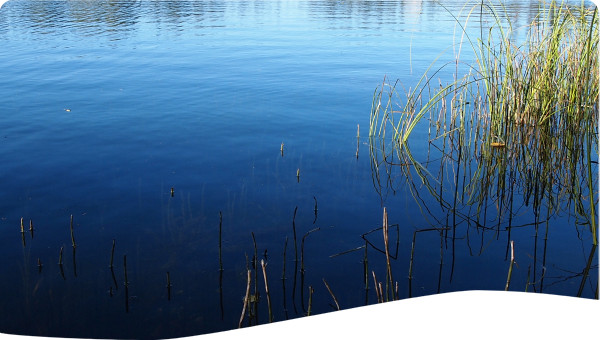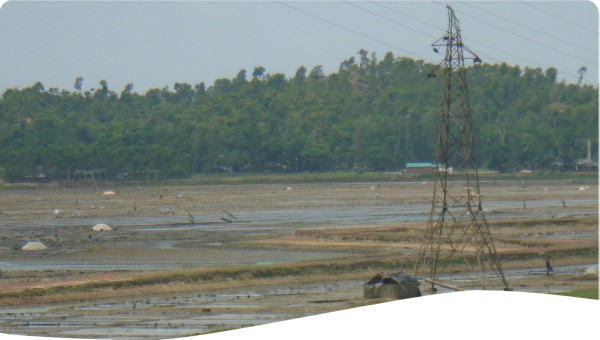Driven by the Water Resource Directorate of the Ministry of Land, Water and Environment, Eritrea initiated IWRM implementation in 2005. Several steps were taken including the drafting of a water situation analysis report, identifying strategic areas and major gaps for IWRM implementation, and completing an IWRM Action Plan. The lessons learned from this case study are the importance of proper management of the planning process and building capacity for IWRM.
Eritrea is a country facing a number of serious challenges related to water resources management. A number of these challenges arise from various factors both within and outside the water sector. Climate variability, increasing in demand for water as a result of development and population growth, low level of investment on improving the supply and efficiency of water use, weak regulatory and enforcement mechanism for proper water allocation and use, high level of environmental degradations, low level of knowledge on the resources base are some of the key factors with negatively impacting the management of water resources sector. It is also recognized that it is the poor who suffer most from the lack of water service delivery and the environmental degradation arising from mismanagement of water.
Since the World Summit on Sustainable Development in Johannesburg in 2002, by governments including Eritrea, water was seen as the underline element of reaching the Millennium Development Goals, which resulted in the establishments of targets. Accordingly, several countries have started the process of putting in place elements or substantial amounts of the Integrated Water Resources Management Process envisaged during the World Summit on Sustainable Development.
Eritrea started the process towards IWRM development at end of 2003, by the formation of a CWP. As a result, in July 2004 a proposal on an IWRM action program was prepared by the Water Resource Department of the Ministry of Land, Water and Environment and secured financing from GWP and the Netherlands Government to conduct the IWRM and water efficiency planning process. Using CWP as a major platform for consensus building and dialogues, IWRM process continued through meetings, briefings, and workshops to secure political will and consolidate stakeholder involvement for the preparation of the IWRM plan.
The critical phase of the project was to develop Situation analysis. The report participated 94 people and was compiled by 9 key contributors from variety of sectors such as University of Asmara, IWRM Project office, Ministry of Land, water and Environment, Ministry of Agriculture, Ministry of Health, and Ministry of Trade and Industry. With support of the government and commitment of partners the water sector situation analysis report was drafted in July 2006 which was followed by the development of the strategy document in 2007.
The strategy document benefited greatly from the capacity building process carried out for the strategy formulation teams and establishment of 5 working groups that provided a structured approach to the process. To facilitate the preparation of the IWRM Action Plan, strategy on how to address the identified gaps for IWRM was formulated and documented with the full participation of stakeholders.
Considering the present challenges in water resources management, development and use and their urgency of addressing them the ERI-CWP reviewed and redrafted former water resources policy, water resources proclamation and drafted a proclamation for the establishment of new water resources authority/commission and the inclusion of IWRM approaches and principles complying to the country national development strategies, sectoral policies, and management plans, Interim -Poverty Strategy Paper, land proclamation, Environmental management plan, agricultural policy and operational procedures and guidelines. Other regulatory instruments like “Regulations for the issuance of permits for water use and construction of hydraulic works” and “Regulation for the issuance of waste discharge permit” were also drafted to check the unregulated use of water resources and waste discharge.
The second priority in managing the project was to improve understanding on IWRM principles at all levels from relevant ministries, through training institutions, to regional administration. Regular workshops, management meetings, 12 conferences, 4 national dialogues, 8 campaigns and more than 30 training courses were organized by project management unit (team).
At end of 2009 the IWRM Action Plan was completed and disseminated to the broader stakeholders. The Action Plan clearly documented 95 actions/project portfolios that address the identified gaps in enabling environment, institutional framework, and management instruments.
The Action Plan has focused on seven thematic/action areas:
1) Water resources assessment, development and protection;
2) Water resources allocation and water use;
3) Disaster management;
4) Enabling environment;
5) Implementation and financing mechanism;
6) Research and information exchange; and
7)Basin Management Plan.
The full commitment of the CWP technical and core teams with regard to managing the project resulted in securing the role of the leading Ministry in fulfilling its obligation through involvement in the IWRM planning process and facilitating the stakeholder’s participation.
As a result of IWRM planning process a major regulatory instrument (Water Proclamation) was amended and several new regulations were adopted. As the capacity building component was a critical part of the planning process, as a result, decision makers’ (Ministers, Director Generals and Directors) are fully aware of IWRM planning process, concepts, and principles. Up to 80 decision makers, water professionals and experts of relevant stakeholder institutions at national level and over 700 stakeholders at sub-national level undertook extensive capacity building programs in their own institutions.
Securing political commitment and maintaining it to the required level to implement the proposed reform on institutional and legal framework is still a challenge that continues to confront the IWRM process. Even though there have been significant sensitization and awareness programs undertaken as key step to secure political commitment from policy and decision makers and achieved significant achievements, government ministers change, leadership evolves and more fundamentally, the ultimate benefit of political will is best brought to test in the implementation phase of the Action Plan. In other words, the “paperwork has been done” but there is still a long way to the impact that “IWRM is influencing conditions on the ground and objectives for water resources are achieved fully or in part”.
A role of the Eritrean Country Water Partnership in facilitation of the IWRM planning process was significant. Although the IWRM planning was initiated and funded by external actors, CWP succeeded to create national ownership.
Political will advanced the development of the strategic planning document; however, the implementation of the IWRM Action plan will test the results of this project. There are still challenges regarding availability of funds and expertise.
 Case studies
Case studies

